When Fiat and Chrysler first started joining, it was clear to many that the two companies had rather different approaches to engines. Neither was right or wrong; both had some highly efficient, clever engine designs. Could they be merged to create a better, more state-of-the-art powerplant than either company had done on their own?
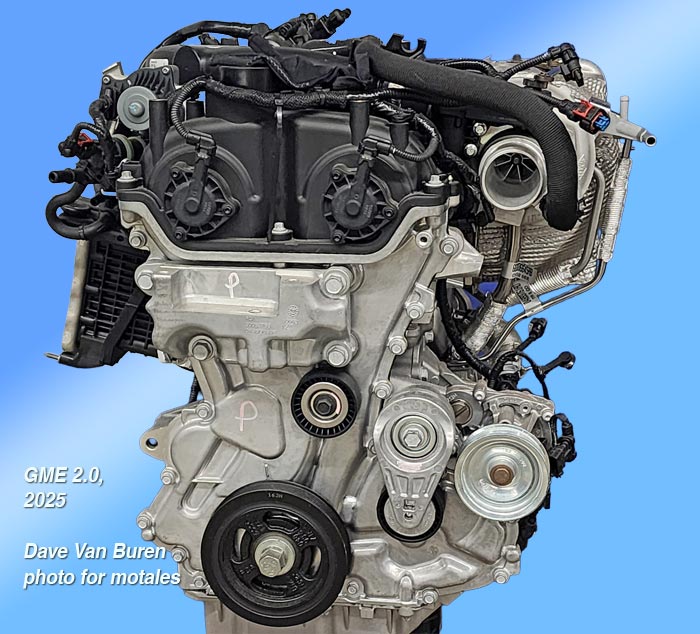
The GSE and GME series of engines answered the question: absolutely, yes. The Global Small Engine and Global Medium Engine were both four-cylinder series, integrating aspects of the old Neon engine (still made, albeit heavily modified, by Fiat in Brazil); and the current Fiat and Chrysler four-cylinder series, along with some clever aspects of the Pentastar V6.
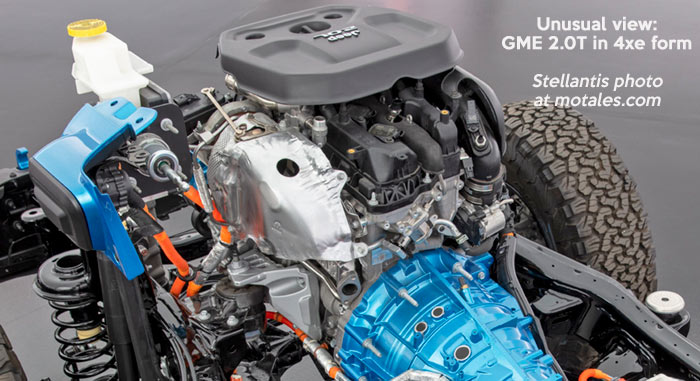
Both series were intended to replace every engine below six cylinders that existed when Fiat and Chrysler first got together, from one-liter Fiat TwinAir to 2.4 Chrysler TigerShark, but this process would take years, and is still under way. Both were engineered around common combustion chambers, with the rest of the engine then being developed differently for high-end brands (Maserati, Alfa Romeo) and volume brands (Jeep, Fiat, Chrysler, Dodge). The trade name for the first GSE was Firefly; none was created for the GME, but the project name was Hurricane, after the plane rather than the Jeep engine.
Development was done in a global fashion; the team included members from the United States, Italy, Brazil, and India. The team leaders were Bob Lee and Aldo Marangoni (Powertrain Coordinator and Powertrain Engineering Director for Latin America, respectively). Bob Lee, who joined Chrysler in 1978, had led the new Hemi and the Pentastar V6 programs; Aldo Marangoni had worked on MultiAir, FIRE, TwinAir, and diesel engines.
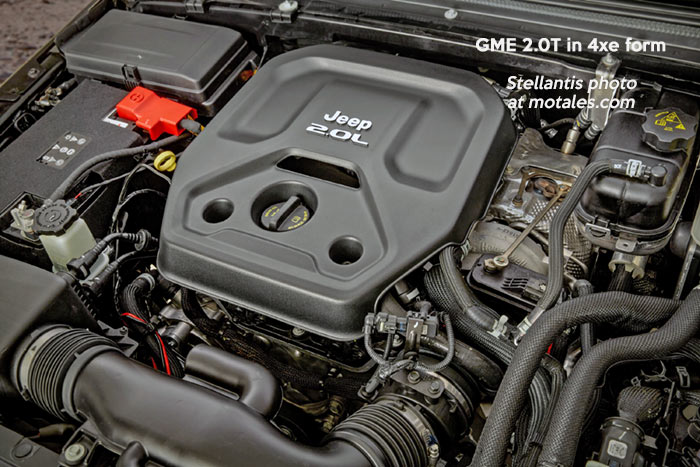
According to Mike Volkmann, writing for Allpar, the block has a great deal of resemblance to the Neon engine’s, while the combustion chamber seems similar to the second-generation 4.7 V8. The integrated exhaust manifold, which increases thermal efficiency and reduces cold emissions, seems similar to that of the Pentastar. The open deck block, used in volume applications, has an offset crank (like the TigerShark) to reduce piston-to-block loading; and the variable flow oil and water pumps are tricks used by Ram for some time.
The fuel injection appears to be influenced by Fiat’s acclaimed diesels. This direct fuel injection system has a common fuel rail and high 2,900-psi pressure; multi-hole fuel nozzles in the heads atomize the fuel thoroughly.
The turbocharger is a twin-scroll setup with low inertia and an electronically controlled wastegate, placed in the integrated exhaust manifold. The exhaust manifold is water-cooled to help keep the turbo cool, and to help the engine to warm up more quickly. The “intercooler” (water/air charge air cooler) is built into the intake. Speaking of cooling, in addition to the variable flow water pump, an added electric water pump helps when extra cooling is needed.

The block is sand-cast aluminum, with cast-iron liners for durability. Alfa Romeo uses a closed-deck version. Regardless, the GME 2.0 has a light crank, low-friction roller bearing balance shaft, and variable displacement oil pump which only provides high pressure when needed. Oil squirters at each bore cool the pistons and prevent knocking; the pistons themselves are cast aluminum, with plasma-coated rings. The head is cast aluminum alloy, with four valves per cylinder, sodium-filled exhaust valves, MultiAir, dual overhead cams, and high-tumble intake ports.
A low-friction chain drive works both the intake and exhaust valves. Hollow shafts and polished cam journals cut 3.5 pounds from the weight.
On the emissions side is water-cooled exhaust gas recirculation (EGR), close-coupled catalyst, and a wide-range oxygen sensor.
Mild-hybrid versions use a belt-starter-alternator (BSG) system, which helps the stop/start system and provides some added power before the turbo spools. The system can take regular fuel, though premium is recommended for best performance; EPA estimates are based on regular fuel.
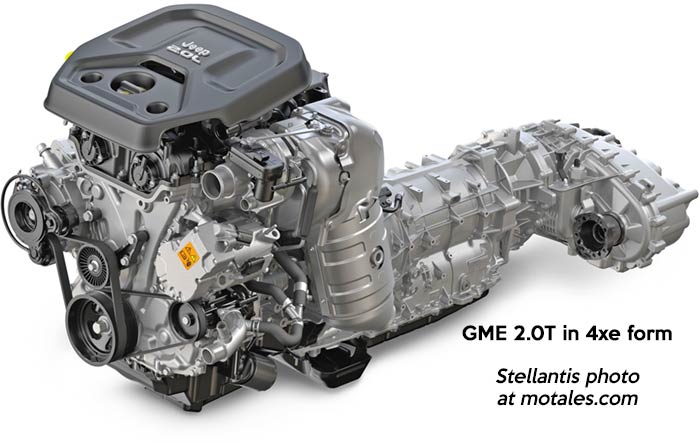
As used by Jeep, power is rated at 270 horsepower and 295 pound-feet of torque; peak torque arrives at just 3,000 rpm. The recommended oil is a standard grade easily available in the United States, with a maximum 9,000 mile or 12 month change interval. Owners of early engines complained of various loose-connector and loose-hose issues, but these appear to have been resolved.
| 2025 Grand Cherokee | Wrangler 4xe | |
|---|---|---|
| Horsepower | 290 @ 5,250 | 375* |
| Torque | 295 @ 3,000 | 470* |
| Redline | 5,800 rpm | 5,800 rpm |
| Compression | 10:1 | 10:1 |
| Size | 121 cid (1995 cc) | |
| MPG | 22 / 31 | 23 / 21 |
| Bore x stroke | 84 x 90 mm | |
* Including electric motors. The engine itself has the same horsepower ratings. The standard light hybrid has a 44 hp / 39 lb-ft belt-start generator/motor; the 4xe includes this and a 134-hp / 181 lb-ft traction motor integrated into the transmission.
The four-cylinder reaches its peak horsepower and torque ratings long before the Pentastar V6, and torque is 35 lb-ft higher. The redline is lower than that of the V6 (5,800 vs 6,600). Still, fuel economy is rated at 23 mpg in the 2020 Wrangler, versus 20 mpg with the V6. (That's 22 city, 24 with the GME, and 18 city, 23 highway with the V6). It also does well in the Grand Cherokee and Grand Commander (China-only), and is believed to be going into the 2026 Cherokee.
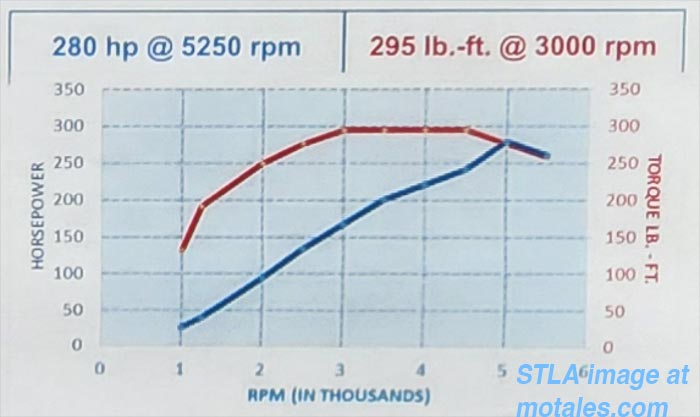
At 1200 rpm, the 2-liter engine provides around 150 lb-ft of torque—making up for the roughly 40 hp.
In 4xe form, with a more serious hybrid setup, the Wrangler has a 21 electric range and 22 mile electric-plus-gasoline range (during which it is rated for 49 MPGe). It was set up mainly for power, and does 0-60 mph in six seconds.
Early versions of the engine were made in Trenton South, for 2018 Jeeps; it is set to be produced in much larger volumes in Indiana. In theory, the 2.0T eventually replaces the Pentastar V6, while the GSE 1.3T and 1.5T eventually replace the Chrysler 2.0 and 2.4 liter engines (as well as the Fiat 1.4T). A new version, called the Hurricane4 or Hurricane 2.0, is due for 2026 or 2027.
Copyright © 2021-2025 Zatz LLC • Chrysler / Mopar car stories and history.
YouTube • Editorial Guidelines • Videos
Tailfins Archive • MoTales on BlueSky